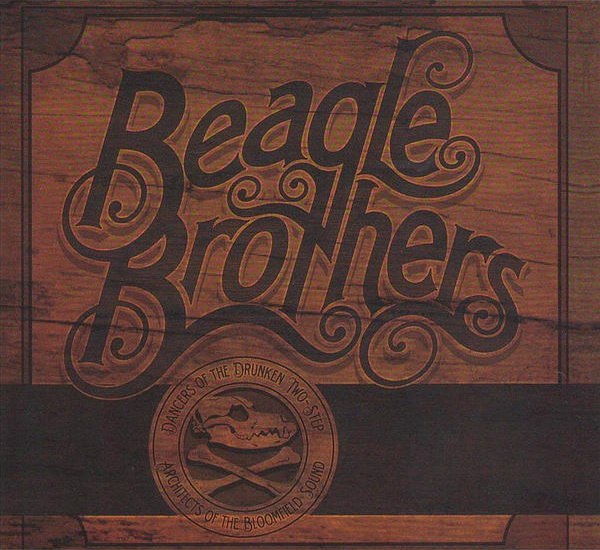Thursday, January 31st, 2013 // Blogs,In-Studio,J-Walking
On Dec. 9, WRCT hosted a very special guest, Rubblebucket, in our studio. The eight-person ensemble performed acoustic versions of “Pain From Love” from their latest album Oversaturated and one of their best known songs, “Came Out of A Lady” from Omega La La. They came just in the nick of time to promote their concert featuring Reptar that night at Mr. Smalls in nearby Millvale, Pa. Unfortunately, I could not attend the performance but I did manage to snag a brief interview with three of the band members: band leader and trumpet Alex Toth, vocalist and saxophonist Kalmia Traver, and guitarist Ian Hersey. Snippets of the interview are just below the photo.

Jess: I have asked other bands this question before and I will ask you guys as well, can you provide some more insights regarding the interests listed on your Facebook page? “Traveling, eating good food, hiking, rhythmic lock, exotic beats and colors”
Alex Toth: Yes! All of these things are true. We’ve actually gone on group hikes several times and they’re a lot of fun.
(I also noticed that Kalmia was wearing brightly colored socks, true to the band’s professed love of colors.)
Jess: Is there anything you like to do in particular when you have down time after getting back after a tour?
AT: Do nothing. Absolutely nothing. Being on the road is a busy hectic lifestyle, so it’s nice to relax.
Kalmia Traver: I love riding around on my bike and something I always have to do is ride my bike over the Williamsburg Bridge.
Ian Hersey: Eat pizza with lots of basil and delicious cheese!
Jess: Now, I understand that Alex and Kalmia met at the University of Vermont, but did you two originally come in as music majors or what?
AT: No, I actually came in intending to be a psych major.
KT: I was undeclared.
(The two of them decided to pursue their musical interests instead and henceforth Rubblebucket was born.)
Jess: Do you have any favorite books?
AT: We’ve been exchanging books by David Foster Wallace with each other.
The interview was short, as time was running out, but I hope you have learned a bit more about Rubblebucket. They’re rad and definitely a group to keep an eye out for the future.
Interview by Jess Phoa. Photo courtesy of Roll Call Records. Special thanks to Ted and Eden for all of their help setting up and producing this interview.
Tuesday, January 29th, 2013 // Top Ten
- Beagle Brothers: Dancers Of The Drunken Two-Step/Architects Of The Bloomfield Sound
- Various Artists: Diablos Del Ritmo: The Colombian Melting Pot 1960-1985
- JD McPherson: Signs and Signifiers
- Tame Impala: Lonerism
- Submotion Orchestra: Fragments
- Child Actor: Victory
- Steve Bug: Noir
- Zulik: Zulik Project
- Various Artists: The Original Sound of Cumbia
- Jon Porras: Black Mesa
Monday, January 28th, 2013 // Blogs,Paperhouse
If you have the misfortune of living near me, you’ve probably heard me blasting Radiohead’s Amnesiac over the past couple of days. Earlier this week a friend recommended I read a review of the album by John Darnielle of the Mountain Goats on his blog, Last Plane to Jakarta. After reading the review, I couldn’t help but listen to the album on repeat.
What I found most striking about his review was its presentation. Unlike most, Darnielle’s review was posted in 10 segments released over the course 2001 and 2002, with each song considered individually. Furthermore, he did not consider Amnesiac in terms of OK Computer or Kid A, the band’s two most critically acclaimed albums.
I often find myself reading — and occasionally writing — music reviews that insist on looking at albums from a very fixed perspective. These reviews subsequently evaluate albums in terms of a band’s legacy and aesthetic, as opposed to looking at an album for what it is: a self-contained collection of songs. Darnielle’s review makes a point of showing how this former method obfuscates the gravity of an album and can end up portraying a masterpiece like Amnesiac as a castaway B-side collection.
Even though Darnielle’s review is over a decade old, it remains relevant to the current state of music journalism. Much of today’s writing is stale, hackneyed, and more concerned with legacy than with legitimate journalism. Darnielle’s particular style of in-depth musical analysis is not the most conventional model for how music journalism should be. However, it models critical, independent thought — a trait that all music reviewers should aim to reflect. While the legacy and cultural relevance of a band is important in its own right, music journalists should not allow these aspects to overshadow their evaluation of an album’s quality.
(Originally published in The Tartan)


